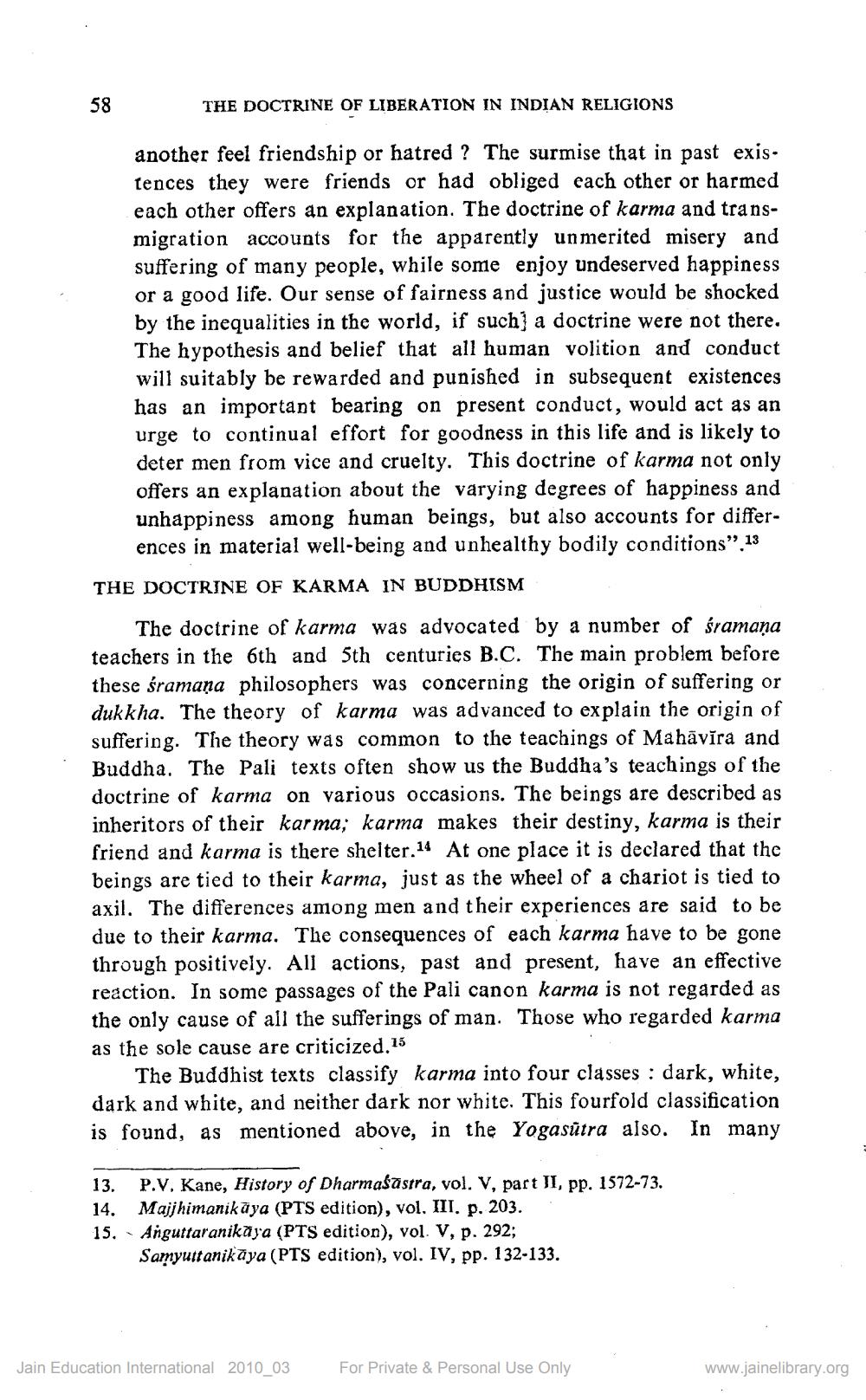________________
58
THE DOCTRINE OF LIBERATION IN INDIAN RELIGIONS
another feel friendship or hatred? The surmise that in past existences they were friends or had obliged each other or harmed each other offers an explanation. The doctrine of karma and transmigration accounts for the apparently unmerited misery and suffering of many people, while some enjoy undeserved happiness or a good life. Our sense of fairness and justice would be shocked by the inequalities in the world, if such] a doctrine were not there. The hypothesis and belief that all human volition and conduct will suitably be rewarded and punished in subsequent existences has an important bearing on present conduct, would act as an urge to continual effort for goodness in this life and is likely to deter men from vice and cruelty. This doctrine of karma not only offers an explanation about the varying degrees of happiness and unhappiness among human beings, but also accounts for differences in material well-being and unhealthy bodily conditions".13 THE DOCTRINE OF KARMA IN BUDDHISM
The doctrine of karma was advocated by a number of śramana teachers in the 6th and 5th centuries B.C. The main problem before these śramana philosophers was concerning the origin of suffering or dukkha. The theory of karma was advanced to explain the origin of suffering. The theory was common to the teachings of Mahavira and Buddha. The Pali texts often show us the Buddha's teachings of the doctrine of karma on various occasions. The beings are described as inheritors of their karma; karma makes their destiny, karma is their friend and karma is there shelter.14 At one place it is declared that the beings are tied to their karma, just as the wheel of a chariot is tied to axil. The differences among men and their experiences are said to be due to their karma. The consequences of each karma have to be gone through positively. All actions, past and present, have an effective reaction. In some passages of the Pali canon karma is not regarded as the only cause of all the sufferings of man. Those who regarded karma as the sole cause are criticized.15
The Buddhist texts classify karma into four classes: dark, white, dark and white, and neither dark nor white. This fourfold classification is found, as mentioned above, in the Yogasütra also. In many
13.
14.
15.
P.V. Kane, History of Dharmasastra, vol. V, part II, pp. 1572-73. Majjhimanikaya (PTS edition), vol. III. p. 203.
Anguttaranikaya (PTS edition), vol. V, p. 292; Samyuttanikaya (PTS edition), vol. IV, pp. 132-133.
Jain Education International 2010_03
For Private & Personal Use Only
www.jainelibrary.org




